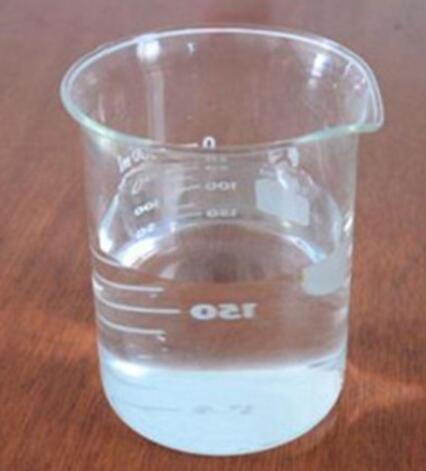Background and overview[1]
Styrene oxide, also called styrene oxide, is an important organic intermediate that can be used as an epoxy resin diluent, UV absorber, and flavoring agent. It is also an important intermediate in organic synthesis, pharmaceuticals, and fragrance industries. For example, styrene oxide is the raw material for the production of levamisole; in addition, phenylethanol produced by catalytic hydrogenation of styrene oxide is the main component of rose oil, clove oil, and neroli oil, and is widely used in the preparation of food, tobacco, soap, and Cosmetic fragrance is an important synthetic fragrance with good fragrance, low price and very large dosage. Its dosage is tens of thousands of tons every year. China is the main producer of phenylethanol in the world, occupying 80% of the world’s market share.

Preparation[1-3]
Report 1,

Add 1g styrene, 1g isobutyraldehyde and 0.03g ammonium chloride into a 150mL reaction bottle, then add 50mL acetonitrile, connect a 500mL oxygen sphere, stir magnetically at 60°C for 8 hours, take samples for analysis, and the reaction is complete. The conversion rate of styrene is 100%, and the selectivity of styrene oxidation is 82%.
Report 2,
Prepare 100 kilograms of 50% sulfuric acid solution, 350 kilograms of sodium bromide solution (including 103 kilograms of pure sodium bromide), and 134 kilograms of 30% alkali solution.
Put 104 kilograms of styrene into a 1000L enamel kettle at one time, add 50 grams of ferrous sulfate; start stirring, raise the temperature to 75°C and start adding dropwise 120 kilograms of 30% hydrogen peroxide solution, sodium bromide solution and sulfuric acid solution; The three materials are added simultaneously within 10 hours. During the dripping process, the temperature is controlled at 65-80°C. After the dripping is completed, the reaction continues for 10 hours. The temperature is controlled at 75-80°C. Stop stirring and take samples. The reaction is deemed to be qualified. At the end point, let stand, separate the oil layer, cool the water layer to -15°C, precipitate 315 kg of Glauber’s salt crystals, filter out the solid, and use the mother liquor to prepare various solutions required for bromoalcoholization. Put bromophenyl alcohol into the saponification kettle at one time; start stirring, control the temperature to 50°C, and start adding liquid caustic soda dropwise; complete the addition in 8 hours, and then continue the reaction for 8 hours, and control the temperature at 45 to 55°C; after the reaction is completed, wait Leave it for half an hour. If the test is qualified, it is the end of the reaction; release the recovered sodium bromide solution in the lower layer, and put the material liquid into the finished product tank. After testing the content of the sodium bromide solution, add new sodium bromide to adjust the concentration to 29.4%, and continue Used in bromoalcoholization reactions. The yield of styrene oxide is 75.7%.
Report 3,
Using Sb-loaded magnesium-aluminum composite metal oxide as a catalyst to catalyze H2O2 epoxidation of styrene into styrene oxide, the specific operation is as follows:
(1) Take 0.09molMg(NO3)2·6H2O and 0.03molAl(NO3 sub>)3·9H2O was dissolved in 150 ml of deionized water to prepare solution A. Drop solution A into the solution under vigorous stirring at a dropping speed of approximately 2 ml/min. Mixed alkaline solution (NaOH/Na2CO3, molar ratio 4/1). Use mixed alkali solution to adjust the pH value of this suspension to about 9 to 11. After precipitation, the resulting slurry was refluxed and aged at 70°C for 20 h. After filtering and washing and drying at 100°C, magnesium aluminum hydrotalcite (Mg-Al-CO32-LDHs) can be obtained. After roasting 8gMg-Al-CO32-LDHs sample at 400℃ for 5h, add 40ml of 0.38wt.% SbCl3 solution, stir and reflux at 80℃ for 24h, and dry at 100℃ to obtain Sb-loaded Mg-AlLDHs, recorded as Sb /LDHs. Calculate Sb/LDHs at 450°C for 5 hours to obtain a Sb-loaded magnesium-aluminum composite metal oxide, which is recorded as Sb(1.5)/LDO(3) (1.5 means that the mass percentage of Sb in the sample is 1.5wt.%, 3 means that the Mg/Al molar ratio in Mg-AlLDO is 3:1).
(2) Add 0.015mol styrene, 0.05mol 30wt.% H2O2, 10ml acetonitrile, 10ml methanol and 0.3gSb ( 1.5)/LDO(3) catalyst, magnetically stirred and heated to 50°C, reacted at a constant temperature for 6 hours under normal pressure, the reaction product was quantitatively analyzed and detected using the gas chromatography external standard method, and the styrene conversion rate was measured to be 85%, and the styrene oxidation selectivity was 95%.
References
[1][Chinese invention] CN202010120219.0 A method for preparing epoxyphenylene ethane without a metal catalyst
[2][China Invention, China Invention Authorization] CN201010213560.7 Method for Preparing Epoxyphenylene Oxide by Zero Discharge of Wastewater Process
[3][China invention, China invention authorization] CN201710145126.1 A method for preparing epoxyphenylene ethane by epoxidation of styrene


